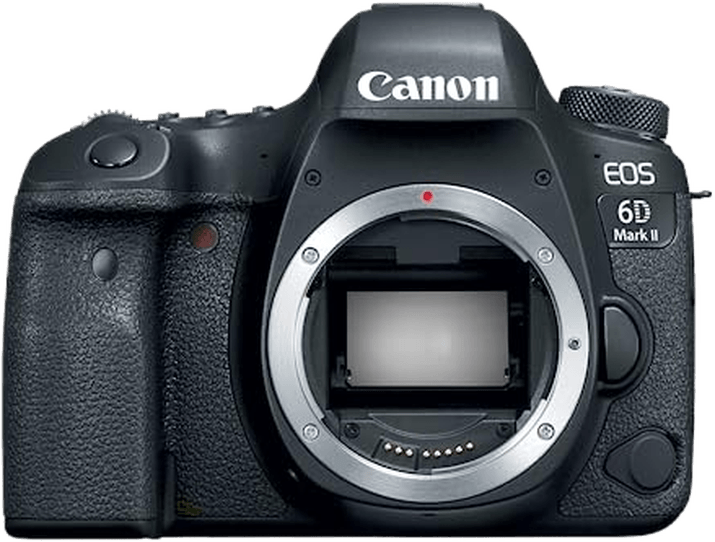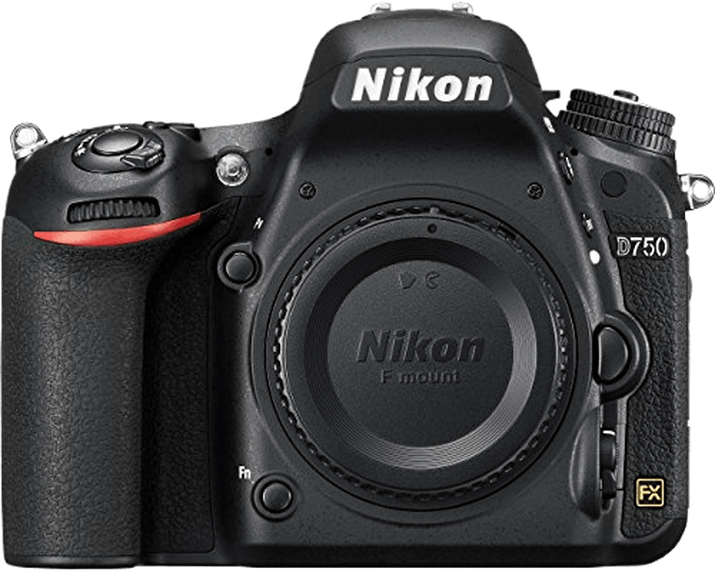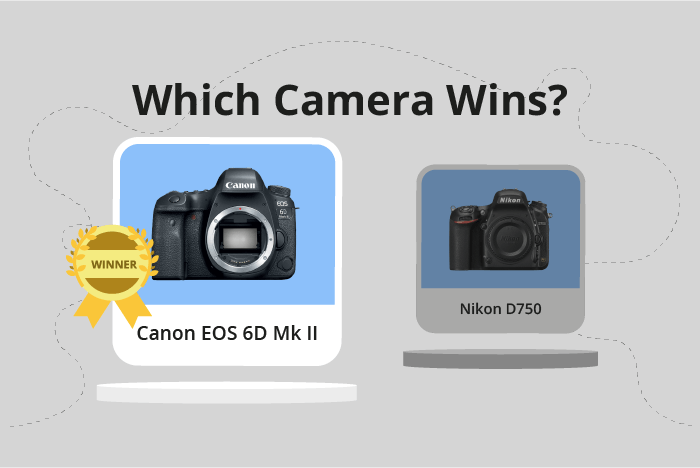Canon EOS 6D Mark II vs Nikon D750 Comparison
Canon EOS 6D Mark II

Nikon D750

The Canon EOS 6D Mark II takes the lead with a score of 71/100, while the Nikon D750 trails slightly behind at 68/100. Both DSLR cameras share common features, such as their camera type and similar sizes, with the Canon measuring 144 x 111 x 75mm and the Nikon at 141 x 113 x 78mm.
The Canon EOS 6D Mark II proves to be a better choice due to its higher score, more recent release in 2017, and a lower launch price of $2000 compared to the Nikon D750’s $2300. Additionally, it is lighter, weighing only 453g/1.00lbs, making it more convenient for travel and extended use.
On the other hand, the Nikon D750 still has its merits despite its lower score and older release year (2014). It may appeal to users who prefer the Nikon brand or specific features it offers.
Taking all factors into account, the Canon EOS 6D Mark II is the superior choice for its higher score, modern features, and affordability. However, the Nikon D750 should not be overlooked and may suit certain users’ preferences.
Canon EOS 6D Mark II vs Nikon D750 Overview and Optics
The Nikon D750 outperforms the Canon EOS 6D Mark II in optics, scoring 71/100 compared to the Canon’s 69/100. Both cameras share several specifications, including a shooting speed of 6.5, CMOS sensor type, full-frame sensor size, and no image stabilization. However, there are differences that contribute to the Nikon’s superior optics score.
The Nikon D750 has a higher DXOMARK sensor score of 93, compared to the Canon’s 85. This means the Nikon camera provides better image quality, especially in low-light situations. Additionally, the Nikon D750 uses an Expeed 4 processor, which contributes to faster image processing and better noise reduction.
On the other hand, the Canon EOS 6D Mark II has a slightly higher megapixel count of 26.2, compared to the Nikon’s 24.3. This allows the Canon to capture more detail in images, making it more suitable for large prints. Furthermore, the Canon EOS 6D Mark II uses a Digic 7 processor, which is known for its advanced image processing capabilities.
Both cameras have their own lens mount systems – the Canon EF and the Nikon F FX. While the choice of lenses depends on the photographer’s preference, both systems offer a wide range of high-quality lenses to choose from.
In comparing the optics of the Canon EOS 6D Mark II and the Nikon D750, the Nikon’s higher DXOMARK sensor score, Expeed 4 processor, and F FX lens mount give it an edge over the Canon. However, the Canon’s higher megapixel count and Digic 7 processor make it a strong contender. Ultimately, the choice between these two cameras depends on the individual photographer’s needs and preferences.
Canon EOS 6D Mark II vs Nikon D750 Video Performance
The Canon EOS 6D Mark II emerges as the winner in the video capabilities comparison with a score of 57/100, while the Nikon D750 trails closely with a score of 56/100. Both cameras share certain specifications, such as offering Full HD video resolution and maximum video dimensions of 1920 x 1080.
However, the Canon EOS 6D Mark II has some advantages over the Nikon D750. Firstly, it offers a maximum video frame rate of 30fps, which is suitable for most videography purposes. Additionally, it has time-lapse functionality built in, which adds versatility to the camera’s video capabilities.
On the other hand, the Nikon D750 has a higher maximum video frame rate of 60fps, making it a better choice for capturing fast-moving subjects and producing smoother video playback. However, it does not have built-in time-lapse functionality, which may be a drawback for some users.
In comparing the video capabilities of these two cameras, the Canon EOS 6D Mark II has a slight edge due to its time-lapse functionality, but the Nikon D750 offers a higher video frame rate. Ultimately, the choice between these two cameras will depend on the specific needs and preferences of the user.
Canon EOS 6D Mark II vs Nikon D750 Features and Benefits
The Canon EOS 6D Mark II outperforms the Nikon D750 in features, with a score of 83/100 compared to the Nikon’s 59/100. Both cameras have a flip screen and WiFi capabilities. However, the Canon EOS 6D Mark II also has a touchscreen, GPS, and Bluetooth, giving it a clear advantage in terms of features.
The Canon EOS 6D Mark II’s touchscreen allows for easier menu navigation and faster settings adjustments. Its GPS functionality enables geotagging of images, which is useful for documenting locations and organizing photo libraries. The added Bluetooth connectivity allows for seamless pairing with compatible devices for quick image sharing and remote control.
In contrast, the Nikon D750 has a slightly larger screen at 3.2 inches compared to the Canon’s 3 inches. Additionally, the D750’s screen resolution is higher at 1,229,000 dots compared to the 6D Mark II’s 1,040,000 dots. This results in a sharper and more detailed image preview on the Nikon D750.
While the Nikon D750 has a larger and higher-resolution screen, the Canon EOS 6D Mark II offers more advanced features, such as a touchscreen, GPS, and Bluetooth, making it the better option in terms of features. The Canon EOS 6D Mark II’s additional features provide a more user-friendly experience and increased versatility, while the Nikon D750’s larger screen and higher resolution may appeal to those who prioritize image preview quality.
Canon EOS 6D Mark II vs Nikon D750 Storage and Battery
The Nikon D750 outperforms the Canon EOS 6D Mark II in storage and battery with a score of 79/100, compared to the Canon’s 45/100. Both cameras accept SD, SDHC, and SDXC memory cards, and neither offer USB charging. However, the Nikon D750 has two memory card slots, providing more storage flexibility, while the Canon EOS 6D Mark II has only one slot.
The Nikon D750 also has a slightly better battery life at 1230 shots, compared to the Canon EOS 6D Mark II’s 1200 shots. Although the difference is minimal, it may be crucial for photographers who require extended shooting sessions.
Despite the Canon EOS 6D Mark II’s lower score in storage and battery, it uses the LP-E6N battery type, which is compatible with other Canon cameras, potentially benefiting users with multiple Canon devices.
Considering the storage and battery aspects, the Nikon D750 is the superior option due to its dual memory card slots and marginally longer battery life. The Canon EOS 6D Mark II maintains an advantage for users with other Canon cameras that use the same battery type.
Alternatives to the Canon EOS 6D Mark II and Nikon D750
Are you still undecided about which camera is right for you? Have a look at these popular comparisons that feature the Canon EOS 6D Mark II or the Nikon D750:

